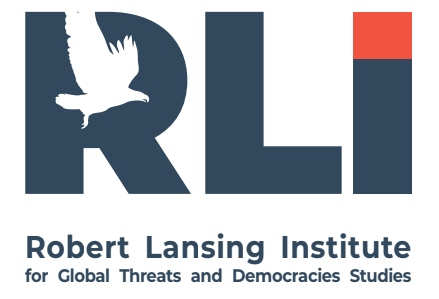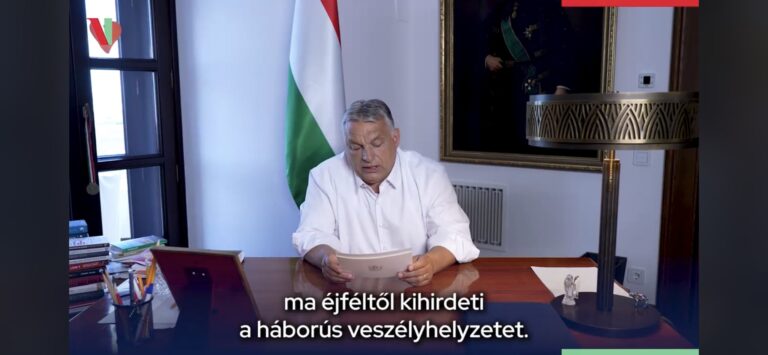Hungary under Viktor Orbán has become a geopolitical pivot point where Russian oil money, Chinese strategic investments, and American capital intersect. This convergence presents serious risks to both the European Union and NATO. Orbán’s deepening entanglements with Moscow—masked as business ventures—are not only eroding EU unity but also offering Russia a financial lifeline amid Western sanctions. Despite Hungary’s formal membership in the Western bloc, its behavior increasingly resembles a Trojan horse within the alliance. The United States must weigh decisive sanctions, as Hungary may already be drifting beyond the point of strategic ambiguity.
Putin’s Hidden Hand in Hungary: Financial, Political, and Strategic Risks
On April 25, 2025, an unannounced arrival in Budapest set off quiet alarm bells in Western capitals. Donald Trump Jr. landed under the radar on Delta flight DL-763, heading straight into two closed-door meetings at the opulent New York Palace hotel. The attendees: Hungarian Prime Minister Viktor Orbán, Foreign Minister Péter Szijjártó, oligarch István Tiborcz (Orbán’s son-in-law), and a Trump Organization envoy overseeing a $3.2 billion portfolio of global real estate and energy assets.
At the center of the discussion were three sectors: banking (OTP Bank), energy (MOL Group), and pharmaceuticals (Richter Gedeon). These are not ordinary deals—they form a geopolitical triangle through which Russian war money, Chinese infrastructure subsidies, and American capital collide. And Hungary sits comfortably at the fulcrum.
OTP Bank: Russia’s Sanctions Loophole
OTP Bank’s Russian subsidiary posted a staggering 40% profit growth in 2024, reaching $372 million—funds reportedly used to finance Russia’s military logistics, including pontoon bridges for the invasion of Ukraine. U.S. and EU sanctions are being bypassed through payments disguised as “inland waterway logistics.” These flows are routed through OTP’s Hungarian accounts and funneled into Russian state-backed industries.
Despite warnings from Brussels, Budapest has not distanced itself from OTP’s Russian operations. On the contrary, the bank’s profits now form the backbone of Hungary’s fiscal independence from frozen EU funds.
Tiborcz and the Raiffeisen Deal: A Trojan Horse for the Kremlin
István Tiborcz is negotiating the acquisition of the Russian branch of Austria’s Raiffeisen Bank International. The U.S. Treasury has blocked the deal five times, citing sanctions violations. However, Tiborcz—widely viewed as a Kremlin-friendly figure—may serve as a nominal buyer, enabling Russia to repatriate dividends via Hungary.
According to EU Today, the deal is worth €1.3 billion and is directly overseen by a senior aide to President Putin. If it proceeds, this backdoor acquisition would allow the Kremlin to re-enter the European financial system via Budapest.
China’s Growing Footprint in Hungary
While Washington calls for strategic decoupling from Beijing, Orbán is rolling out the red carpet. From the Budapest–Belgrade railway to a planned €7 billion battery gigafactory by Chinese giant CATL near Debrecen, Hungary has become China’s bridge into the EU.
Despite strong U.S. warnings about technological backdoors and digital sovereignty threats, Hungary has pledged over €2.4 billion in tax incentives to Chinese firms.
Trump Jr.’s Mission: U.S. Capital with Strategic Strings
According to diplomatic sources, Trump Jr.’s visit had three objectives:
- Redirect Hungarian exports to U.S. markets.
- Channel Trump Organization investments into Budapest real estate and hospitality.
- Negotiate a new tax treaty to shield Hungarian auto manufacturers from U.S. tariffs.
The plan envisions $3–4 billion in direct U.S. investments over the next three years. But even as American capital enters Hungary, Russian and Chinese influence continues to dominate the underlying architecture.The Kremlin’s Strategic Dividend
Moscow remains the key beneficiary:
- Money: Russian defense contracts sustain OTP and potentially Raiffeisen-Russia.
- Politics: Orbán blocks EU assistance to Ukraine, citing “national interest.”
- Narratives: Kremlin-aligned media use Hungary as a staging ground for anti-sanction propaganda.
Between January and March 2025, NATO intelligence suggests €820 million in disguised “loans” from Hungary reached Russian shipbuilding and IT sectors.
The Red Line Is Nearing
Hungary has effectively transformed into a triangulation hub: a station where Russian oil money, Chinese batteries, and American hotel chains meet. The State Department is signaling that OTP Bank and Tiborcz could face designation under the U.S. Specially Designated Nationals (SDN) list if Hungarian-Russian collaboration continues.
The financial architecture of Hungary is dangerously reliant on Kremlin-linked profits. If any one of the three major benefactors—Moscow, Beijing, or Washington—pulls out, the structure could collapse.
Hungary has become the soft underbelly of Europe’s geopolitical order. Orbán is not merely hedging between East and West—he is monetizing the very tension that the EU and NATO aim to resolve. The U.S. must respond with strategic clarity: targeted sanctions, tightened oversight of American capital flows, and a direct challenge to Hungary’s double game.
Budapest is on the brink. The only question is: who will pull the plug first—and into whose arms will Orbán’s Hungary fall?
To dismantle the increasingly destructive triangulation between Hungary, Russia, and China, the United States and its allies in the EU and NATO can pursue a coordinated strategy across diplomatic, financial, legal, and strategic domains. Below are the most actionable and effective options:
1. Sanction the Critical Nodes
- Target OTP Bank and István Tiborcz (Orbán’s son-in-law) under U.S. and EU sanctions regimes (e.g., SDN list) for facilitating Russian financial flows.
- Designate Hungarian intermediaries involved in backchannel transactions with Chinese state-owned enterprises and Russian defense-linked banks.
- Pressure Austria to fully withdraw Raiffeisen Bank from Russia and prevent any sale to Hungarian proxies acting on behalf of Moscow.
2. Financial Pressure & Conditional Aid
- Freeze remaining EU structural funds for Hungary and condition future releases on severing ties with sanctioned Russian entities.
- Impose secondary sanctions on Western companies or investors who use Hungary to channel funds into Russia or sanctioned Chinese ventures.
- Deny Hungarian access to U.S. correspondent banking infrastructure, cutting off financial lifelines for pro-Kremlin institutions like OTP.
3. Strategic NATO Tools
- Suspend Hungary’s intelligence-sharing privileges within NATO if it is found leaking sensitive data to Moscow or Beijing.
- Pressure Hungary through bilateral defense cooperation limits, including freezing joint military projects or defense tech transfers.
- Support alternative logistics and infrastructure routes in Central Europe that bypass Hungary (e.g., reinforce Romania, Slovakia, Croatia).
4. Expose and Undermine the Narrative
- Launch a joint EU-U.S. information campaign exposing Hungary’s facilitation of Russian war finance and Chinese strategic encroachment.
- Support investigative journalism and civil society inside Hungary to counter Orbán’s captured media and reveal corruption in deals with China and Russia.
- Declassify and publish selected NATO intelligence findings on Hungary’s role in financing or laundering funds for Russian military use.
5. Incentivize Realignment
- Offer U.S. and EU infrastructure or clean tech investments as counterweights to Chinese Belt & Road projects—under stricter transparency rules.
- Negotiate a targeted U.S.-Hungary investment framework, contingent on severing ties with sanctioned Russian firms.
- Facilitate Hungary’s reentry into full EU privileges (e.g., fund restoration) only upon measurable strategic reorientation.
6. Legal Measures
- Trigger Article 7 of the EU Treaty to suspend Hungary’s voting rights in EU institutions over rule-of-law and foreign policy breaches.
- Launch investigations into money laundering, corruption, and FARA violations tied to Hungarian actors operating in U.S. or EU jurisdictions.
- Pursue EU legal action against Hungary for violating sanctions enforcement laws and internal market rules.
Summary Table: Pressure Points
| Domain | Tool/Action | Objective |
| Sanctions | SDN listing for OTP Bank and Tiborcz | Block financial links with Russia |
| Finance | Cut U.S. dollar access for pro-Kremlin banks | Choke funding pipelines |
| NATO | Limit intel sharing; suspend defense projects | Push Hungary back in line |
| Diplomacy | Conditional EU aid; Article 7 mechanism | Raise cost of divergence |
| Narrative | Publicly expose Hungary’s role in laundering war funds | Damage legitimacy of Orbán’s policy |
| Incentives | Alternative Western investment channels | Lure Hungary away from Moscow & Beijing |
Russia aalready use its close relationship with Viktor Orbán to play a geopolitical game against the United States, leveraging Hungary as a wedge within both NATO and the European Union.:
1. Sabotaging NATO Unity from Within
- Orbán routinely blocks or delays NATO communiqués, aid packages, and expansion decisions—notably attempting to stall support for Ukraine and Finland/Sweden’s accession.
- Russia benefits from these blockages, using them to claim NATO is fractured and ineffective, thereby weakening deterrence and alliance credibility.
2. Sanctions Evasion and Economic Subversion
- Hungary has served as a financial corridor through which Russian capital (via OTP Bank and potentially Raiffeisen’s assets) continues to flow into Europe.
- Moscow can use Budapest to launder dual-use or military-linked transactions, undermining Western sanctions.
- Orbán’s lobbying in Brussels weakens EU sanctions packages, often citing “national interest” or “energy security.”
3. Manipulating U.S.-EU Relations
- By cozying up to China (e.g., Belt & Road projects, CATL battery plant) and Russia while simultaneously negotiating with Trump-aligned U.S. figures, Orbán creates a triangular balancing act:
- Extracting concessions from the U.S. (e.g., investment deals)
- Diluting EU policy coherence
- Creating the illusion of multipolar diplomacy, which Russia amplifies as proof of Western division.
4. Exporting Kremlin Narratives
- Hungary’s state-controlled media increasingly echoes Russian talking points, especially about Ukraine, NATO, and sanctions.
- These narratives are amplified across Central Europe, often presented as “conservative counterbalance” to Brussels or Washington.
- Moscow uses these narratives to paint pro-U.S. policies as imperial, aggressive, or anti-Christian, especially targeting far-right and populist audiences.
5. Using Hungary to Penetrate EU/Western Markets
- Russian-linked companies can potentially use Hungarian legal or financial covers to maintain access to Western tech, supply chains, or even banking.
- Orbán’s resistance to EU-level investment screening helps Russia sneak through dual-use goods or critical tech components.
Strategic Risk for the U.S.
If Russia continues leveraging Hungary:
- U.S. investment into Hungary risks being entangled in Kremlin-linked networks (e.g., through Orbán’s cronies like Tiborcz).
- Russia may use Hungary as a safe zone to regroup diplomatically or financially while isolated elsewhere.
- Orbán may act as a spoiler in Western policy circles, torpedoing consensus on Ukraine or China at critical moments.
Hungary, under Orbán, has become Russia’s “legalized loophole” inside the Western system. The Kremlin does not need to manipulate Budapest overtly—Orbán’s interests now align with Putin’s in several key areas. For Russia, Hungary is a lever to weaken the West from within—cheap, effective, and deniable.
it is possible to weaken or even dismantle the Orbán regime, but it would require a coordinated, multilevel approach—strategically combining economic pressure, internal political disruption, and European institutional leverage. However, doing so is complex and politically risky. Here’s a breakdown of the tools, strategies, and limitations:
🔻 How the Orbán Regime Can Be Weakened
1. Financial and Economic Pressure
- Targeted U.S. and EU sanctions on Orbán’s inner circle (e.g., Tiborcz, Szijjártó) could disrupt Kremlin-linked money flows and increase internal regime costs.
- Restricting access to EU cohesion funds (already partly frozen) puts economic strain on Budapest. Orbán uses these funds to consolidate patronage.
- Restricting Hungary’s access to Western capital markets or U.S. bank networks (e.g., via SDN lists) could isolate strategic assets like OTP Bank or MOL Group.
2. European Legal Mechanisms
- Invoke Article 7 TEU to suspend Hungary’s voting rights in the EU. Although blocked so far by Poland, this becomes more viable if Poland’s current pro-Western government holds.
- Expand the use of conditionality mechanisms that link EU funding to rule-of-law compliance. This increases domestic political pressure.
3. Support to the Hungarian Opposition
- Western democracies could increase support for civil society, investigative journalism, and opposition coalitions—especially ahead of 2026 elections.
- Offer targeted development funds and visibility to opposition-led municipalities like Budapest, bypassing central government control.
4. Expose Corruption and Foreign Influence
- Coordinated intelligence leaks (e.g., via NATO or Five Eyes partners) revealing Russian or Chinese leverage over Orbán’s inner circle could shake public confidence.
- Support high-visibility anti-corruption investigations, both domestically and internationally (e.g., via the European Public Prosecutor’s Office).
⚠️ What Makes Dismantling Orbán Difficult?
- Entrenched Control Over Media and Judiciary
- Orbán controls over 80% of the media market and has packed courts with loyalists.
- Narrative dominance makes it hard for voters to access critical information.
- Voter Base Manipulation
- Orbán has built a rural, nationalist, and pension-dependent voting bloc that’s highly resistant to liberal or pro-EU rhetoric.
- Geopolitical Balancing Skill
- He expertly balances Russia, China, and the U.S., securing concessions from all sides and avoiding isolation.
- Weak EU Enforcement
- The EU has been slow and divided in enforcing rule-of-law standards, and Orbán uses veto power to extract protection from allies.
🔑 What Could Tip the Balance?
- A major corruption scandal tied to Russian military payments or Chinese backdoors could trigger unrest or EU legal action.
- A shift in Polish politics (already underway) could isolate Hungary within Visegrád and open the door for tougher EU action.
- If Trump loses in 2024, U.S. pressure would likely increase sharply under a more confrontational administration.
- Hungary’s economic downturn or energy crisis could weaken popular support, especially among pensioners and SMEs.
Conclusion
Orbán’s regime is not unbreakable. It is a hybrid kleptocracy that survives on foreign capital, nationalist propaganda, and EU dysfunction. By cutting the financial arteries and exposing the external manipulation, the regime can be weakened significantly or even dismantled over time. However, it will require firm U.S.-EU cooperation, strategic patience, and a clear commitment to democratic values.

More on this story: Hungary: Trojan Horse in Russia’s Proxy War Against Europe

More on the story: Hungary is setting closer cooperation with Russia in Chad
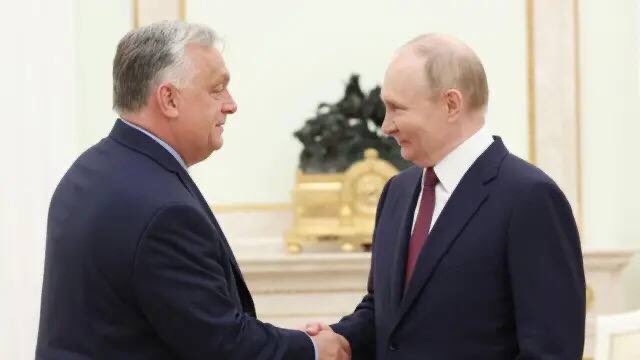
More on this story: Budapest Establishes Infiltration Channel for Russian Intelligence

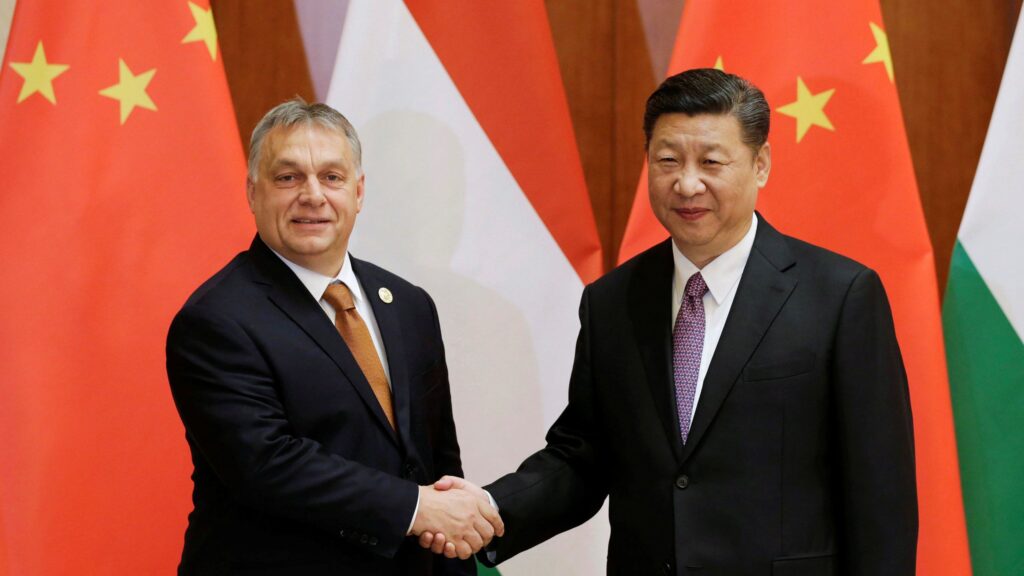
More on this story: Hungary plays as China’s bat to kick the US out of the EU economy

More on this story: Psychological profile of Hungary’s Prime Minister
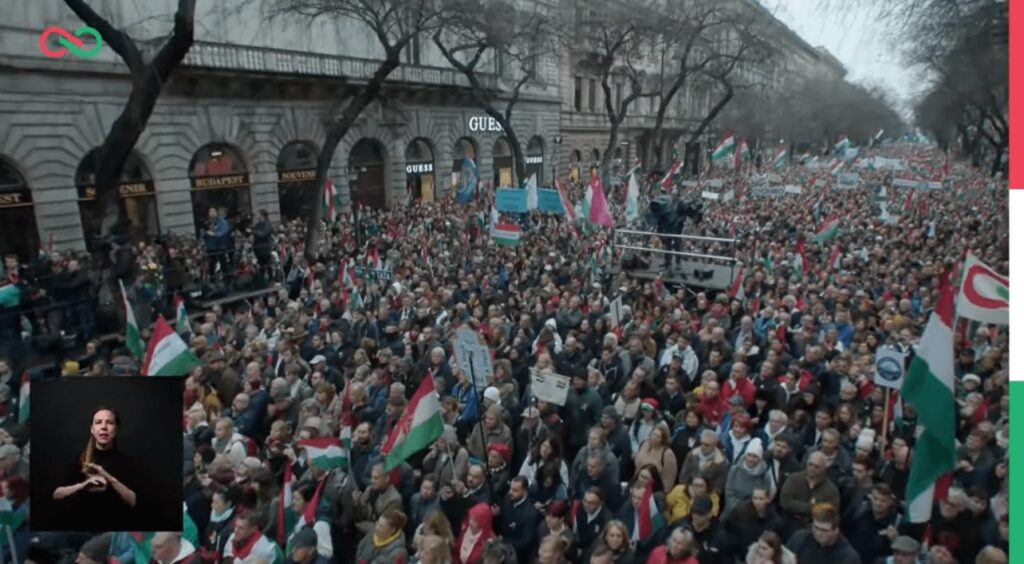
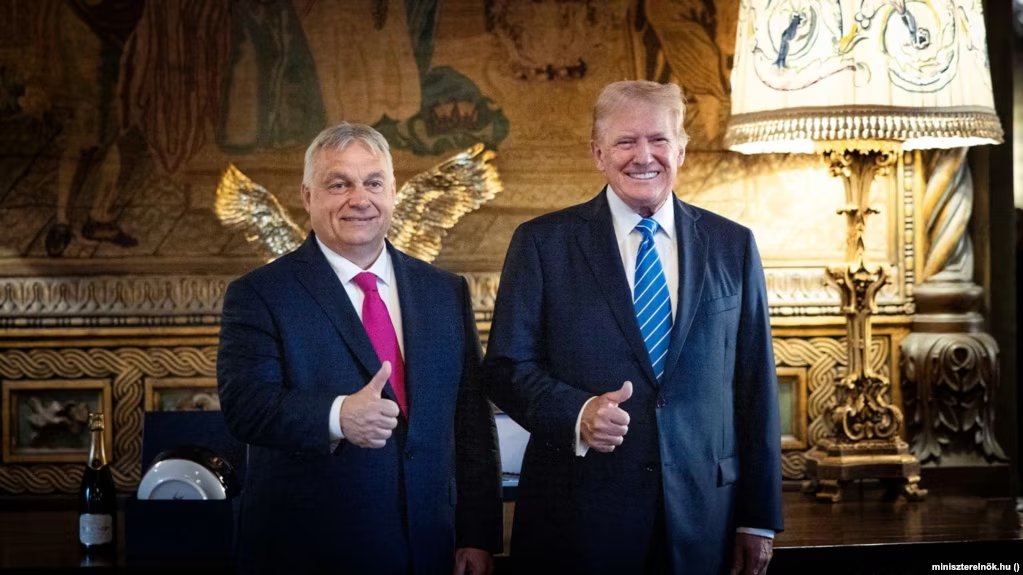
More on this story: Hungarian Prime Minister Joins Russian Efforts to Interfere in U.S. Elections

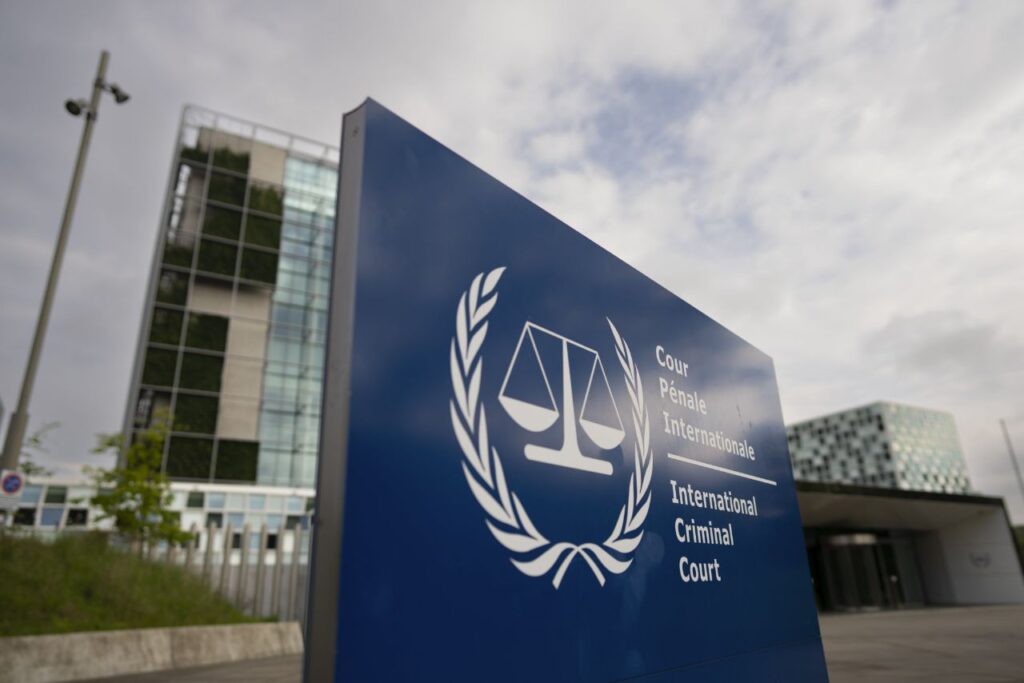
More on this story: Hungary and the ICC: A Test Case for Europe’s Rule-of-Law Commitments
